Assigning User Roles and Permissions
What access FTM internal providers should have and what tasks they are expected to perform depends on their user roles and permissions assigned to them in Provider Automation.
As an admin, you can assign different roles and access levels to your personnel via User Management. Each user's profile has the Access section where you can assign and remove roles and access levels for employees.
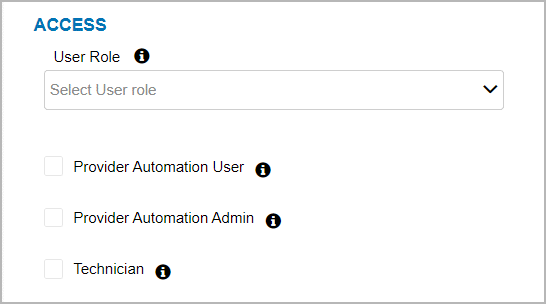
User Roles
Here are the user roles that are available to FTM providers. Based on the user role you opt for, the corresponding access level gets automatically assigned to the employee.
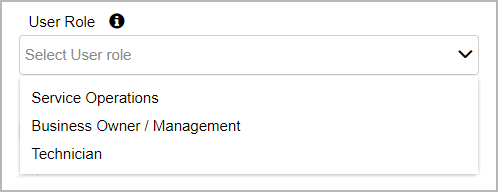
| User role | Description |
|---|---|
| Service Operations | An employee of the business responsible for managing and assisting in the fulfillment of client service needs, including handling work orders, proposals, and invoices in Provider Automation. By default, this user doesn’t have administrative access level to Provider Automation. The Provider Automation User access level gets automatically enabled for this role. |
| Business Owner / Management | The owner of the business or a management representative responsible for the company’s account in the ServiceChannel platform. This is an admin user with full access to all modules within Provider Automation. The Provider Automation User and Provider Automation Admin access levels get automatically enabled for this role. For business owners and service operations personnel who also act as technicians, see Assigning the Technician Access to Business Owners and Service Operations Personnel. |
| Technician | An in-house employee of the business responsible for accessing and completing work orders for clients. Users who are assigned the Technician role automatically appear in the Work Order Assignment section and can be assigned service requests from there. By default, such users only have access to the ServiceChannel Provider Mobile app where they can work on assigned service requests. The Technician access level gets automatically enabled for this role. To log in to the ServiceChannel Provider mobile app, users with the Technician role should use their user ID and password. |
Access Levels
As you pick the desired role for an employee, the corresponding access levels automatically become selected. To ensure that your users have access to the appropriate areas within Provider Automation, you can adjust access levels by selecting additional levels or removing unnecessary ones.
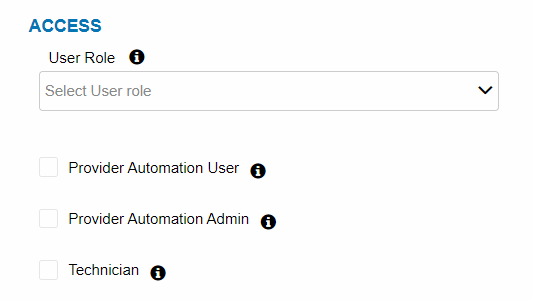
| Permission (aka access level) | Description |
|---|---|
| Provider Automation User | Allows a user to log in to Provider Automation as well as view and manage work orders, requests for proposal, proposals, and invoices. |
| Provider Automation Admin | Gives full access to the Provider Automation modules, specifically to User Management where admins invite and manage their employees. |
| Technician | Permits a user to log in to the ServiceChannel Provider mobile app and work on service requests assigned to them via the Work Order Assignment section of Provider Automation. |
Assigning the Technician Access to Business Owners and Service Operations Personnel
In smaller companies, a business owner or service operations manager may also act as a technician. To enable a person with these roles to have access to the SC Provider mobile app and work on assigned work orders, pick the Technician access level in addition to the Business Owner or Service Operations role. This way, users can log in to SC Provider using their user ID and password, while still keeping their access to Provider Automation.
Don’t change the user role from Business Owner / Management to Technician. You will inadvertently remove the user’s access to work orders, proposals, and other modules within Provider Automation.
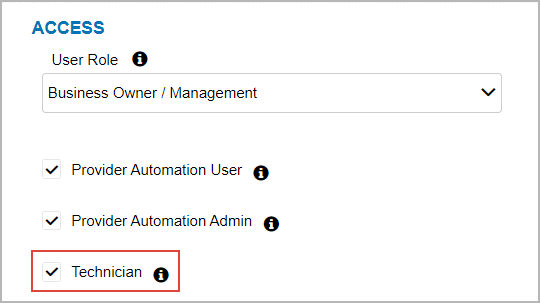
Technician Permissions
Provided that you have the required feature enabled, three technician permissions become available to you in User Management: Technician, Supervising Tech, and Regional Manager.
Reach out to your ServiceChannel representative to start using these FTM permissions.
An employee may have a single tech permission, a combination of them, or the whole package, meaning that the same person may act as a technician and supervisor at the same time or as a supervisor and regional manager — whatever scenario meets your needs.
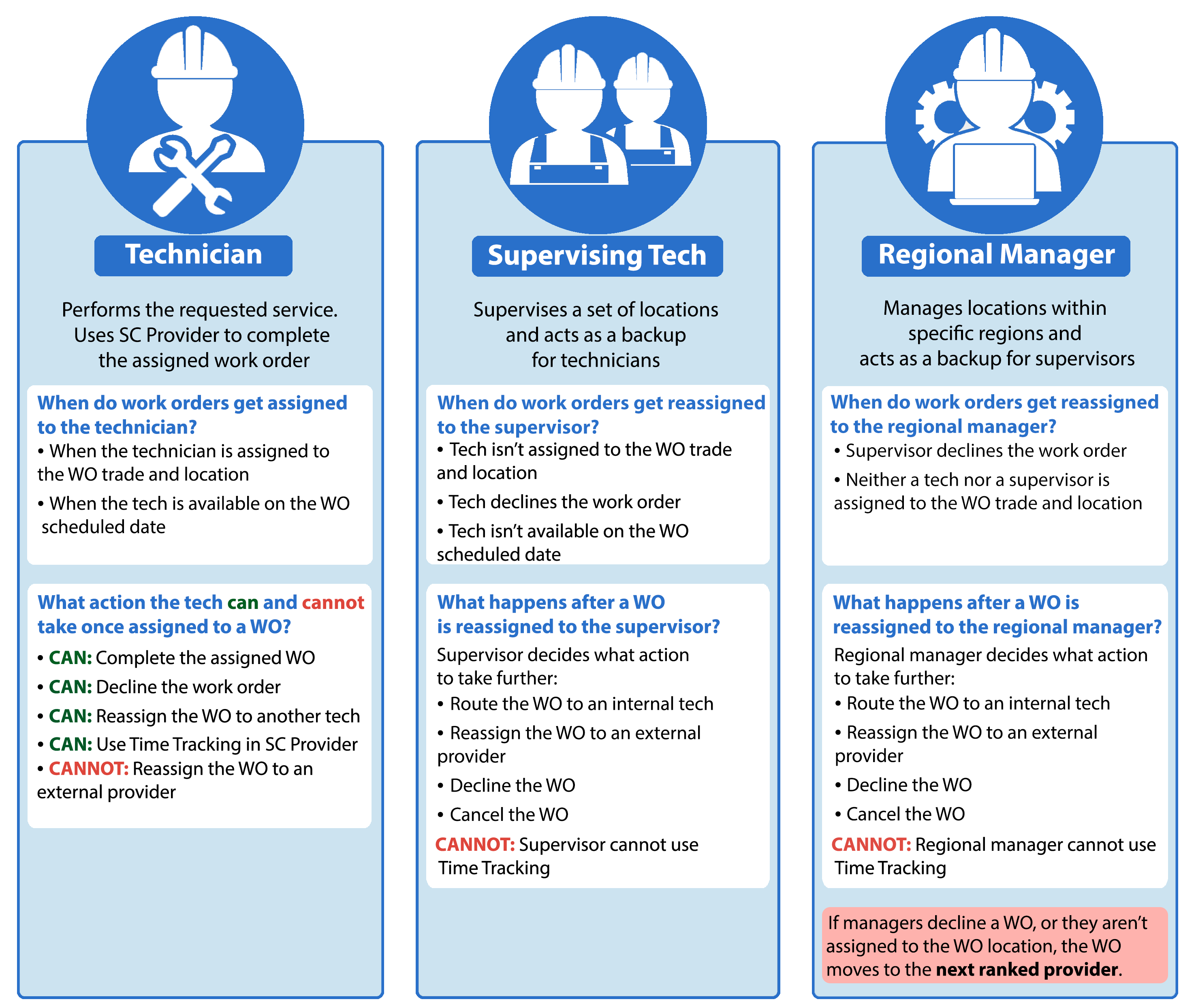
Bringing these roles into play allows you to do the following:
- Prevent declined work orders from being automatically reassigned to external (or next ranked) providers and disallow technicians to reassign service requests to external providers on their own.
- Place the power to reassign work orders to external providers in the hands of supervisors and regional managers only.
- When technicians are unavailable on the scheduled date and time of a work order (based on the Time Tracking status they set in SC Provider), you can also stop these work orders from automatically flowing to an external provider.
- Route declined work orders first to supervisors and regional managers instead of sending them to a next ranked provider right away.
Say your in-house technician declines a work order or is unavailable on the WO scheduled date. In this case, the work order gets reassigned to the supervisor or regional manager — based on the locations and trades that fall under their scope of responsibility. These people decide whether the service request should be reassigned to another available technician, sent to a next ranked provider, or canceled.
To reassign work orders to external providers, you should have the corresponding feature enabled. Contact your ServiceChannel representative if you don’t have it yet.
Assigning Technician Permissions
You can assign technician permissions to your employees from their user profiles in User Management. Regardless of the user role an employee has, any technician permission can be granted to them.
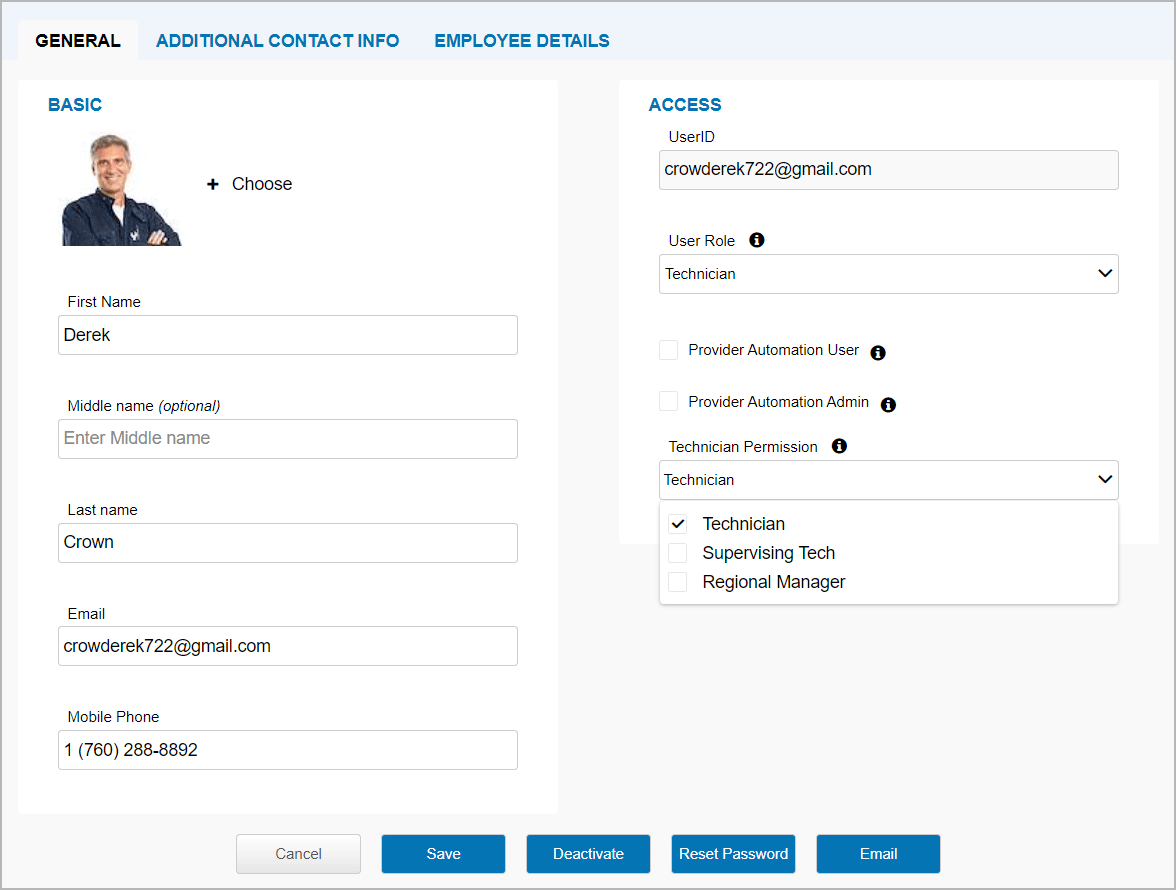
If you are using the Time Tracking feature in SC Provider, note that only employees with the Technician permission can take advantage of it. Neither supervisors nor regional managers can use it.
- Open the employee’s user profile in User Management.
- In the Access section of the profile, select the desired permission from the Technician Permission dropdown:
- Technician
- Supervising Tech
Regional Manager
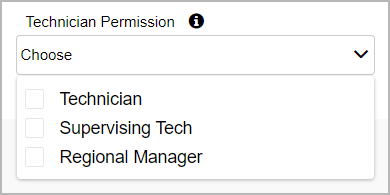
You can select multiple permissions for an employee if required.
Click Save to capture the changes.
Now that you’ve assigned technician permissions, it’s time to create auto-assignment and forwarding rules for your employees.
-
Page:
-
Page:
-
Page:
-
Page:
-
Page:
-
Page:
-
Page:
-
Page:
